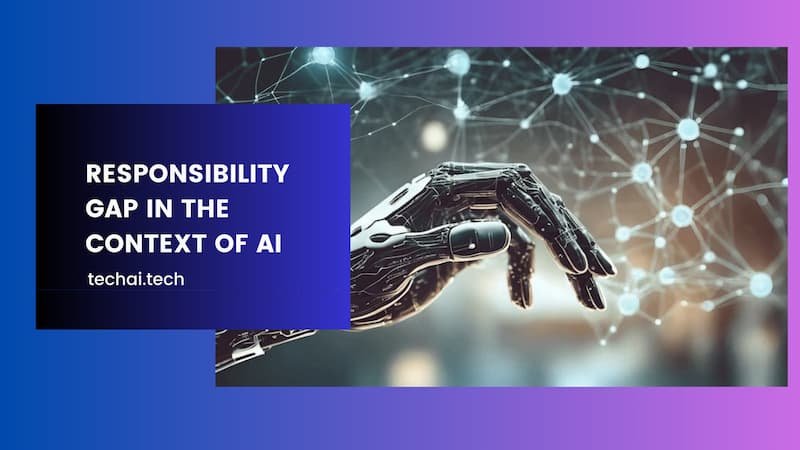Introduction to the Responsibility Gap in AI
Artificial Intelligence (AI) has revolutionized many aspects of our lives, from healthcare to transportation, yet it brings with it significant ethical and legal challenges. One such challenge is the “responsibility gap.” But what is a responsibility gap in the context of AI? This term refers to the difficulty in attributing responsibility when AI systems cause harm or make decisions. As AI continues to evolve and integrate into society, understanding this concept becomes crucial.
The responsibility gap arises because AI systems operate autonomously and often make decisions without direct human intervention. This autonomy complicates the traditional frameworks of accountability, leading to questions about who should be held responsible when things go wrong. Is it the developer, the user, or the AI itself?
The Nature of AI Systems
To fully grasp the responsibility gap, we must first understand the nature of AI systems. AI operates through algorithms that learn from data and make decisions based on patterns and correlations. Unlike traditional software, AI can adapt and evolve, sometimes in ways that its creators did not foresee.
This adaptability means that AI can make complex and unexpected decisions. While this capability is beneficial, it also means that predicting AI behavior becomes challenging. This unpredictability is a core reason for the responsibility gap, as it blurs the lines of accountability.
Legal and Ethical Implications
The responsibility gap has significant legal and ethical implications. In many legal systems, liability is based on the notion of intent or negligence. However, AI lacks intent and operates purely on algorithmic processes. This raises the question: Can we hold an AI system accountable in the same way we hold humans accountable?
Ethically, the responsibility gap challenges our notions of justice and fairness. If an AI system makes a harmful decision, is it fair to blame the developers who may not have anticipated such an outcome? Or should the user be responsible for the actions of the AI? These questions highlight the complexity of addressing the responsibility gap.
Case Studies Highlighting the Responsibility Gap
Several real-world cases illustrate the responsibility gap in AI. For example, autonomous vehicles have been involved in accidents where it was unclear who was responsible. Was it the manufacturer, the software developer, or the vehicle owner? These cases often lead to lengthy legal battles, underscoring the need for clearer guidelines.
Another example is the use of AI in healthcare. If an AI system misdiagnoses a patient, determining responsibility becomes complex. The developers might argue that the AI was trained on accurate data, while the medical professionals might claim they relied on the system in good faith.
Addressing the Responsibility Gap
Addressing the responsibility gap requires a multifaceted approach. One solution is to develop clearer legal frameworks that specify the responsibilities of different stakeholders in AI development and deployment. This could include manufacturers, developers, users, and even the AI systems themselves, through legal personhood concepts.
Another approach is to improve the transparency and explainability of AI systems. If AI decisions are more transparent, it becomes easier to understand the cause of a failure and assign responsibility appropriately. This transparency can be achieved through better design practices and regulatory requirements.
The Role of Developers and Users
Both developers and users play crucial roles in managing the responsibility gap. Developers must ensure that AI systems are designed with safety and ethics in mind. This includes rigorous testing, continuous monitoring, and the implementation of fail-safes to prevent harm.
Users, on the other hand, must be educated about the capabilities and limitations of AI systems. They should understand that while AI can assist in decision-making, it is not infallible. Users should also be trained to recognize when to override AI decisions and take human control.
AI Regulation and Policy
Governments and regulatory bodies are increasingly recognizing the importance of addressing the responsibility gap. Various countries are developing AI-specific regulations that aim to clarify accountability. These regulations often focus on ensuring that AI systems are used ethically and that there are clear lines of responsibility in case of failure.
Policy development is also crucial. Policymakers must engage with technologists, ethicists, and the public to create balanced regulations that protect individuals while fostering innovation. This collaborative approach can help bridge the responsibility gap by ensuring that all perspectives are considered.
The Future of AI Accountability
Looking to the future, the responsibility gap will likely remain a significant challenge. As AI systems become more advanced, they will make increasingly complex decisions that are harder to predict. This complexity will necessitate ongoing efforts to refine legal and ethical frameworks.
Emerging technologies such as AI explainability tools and ethical AI guidelines will play a crucial role in this process. By making AI decisions more understandable and ensuring that ethical considerations are embedded in AI development, we can work towards closing the responsibility gap.
Conclusion: Understanding the Responsibility Gap in AI
In conclusion, the responsibility gap in the context of AI is a complex issue that requires careful consideration. As AI systems become more integrated into our lives, addressing this gap will be crucial for ensuring ethical and legal accountability. By developing clearer frameworks, enhancing transparency, and fostering collaboration among stakeholders, we can navigate the challenges posed by AI and ensure that it benefits society responsibly. Understanding what is a responsibility gap in the context of AI is the first step towards creating a future where technology and ethics coexist harmoniously.


2 thoughts on “What is a Responsibility Gap in the Context of AI?”